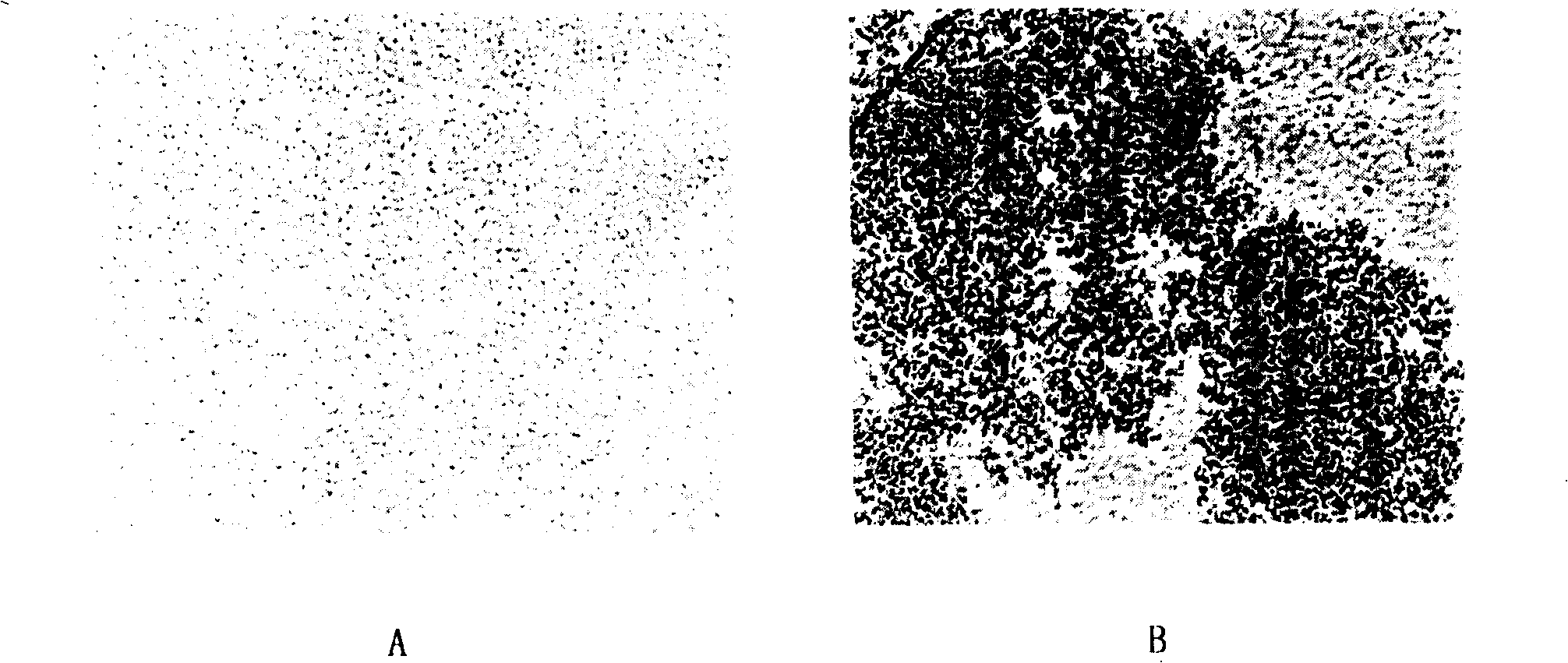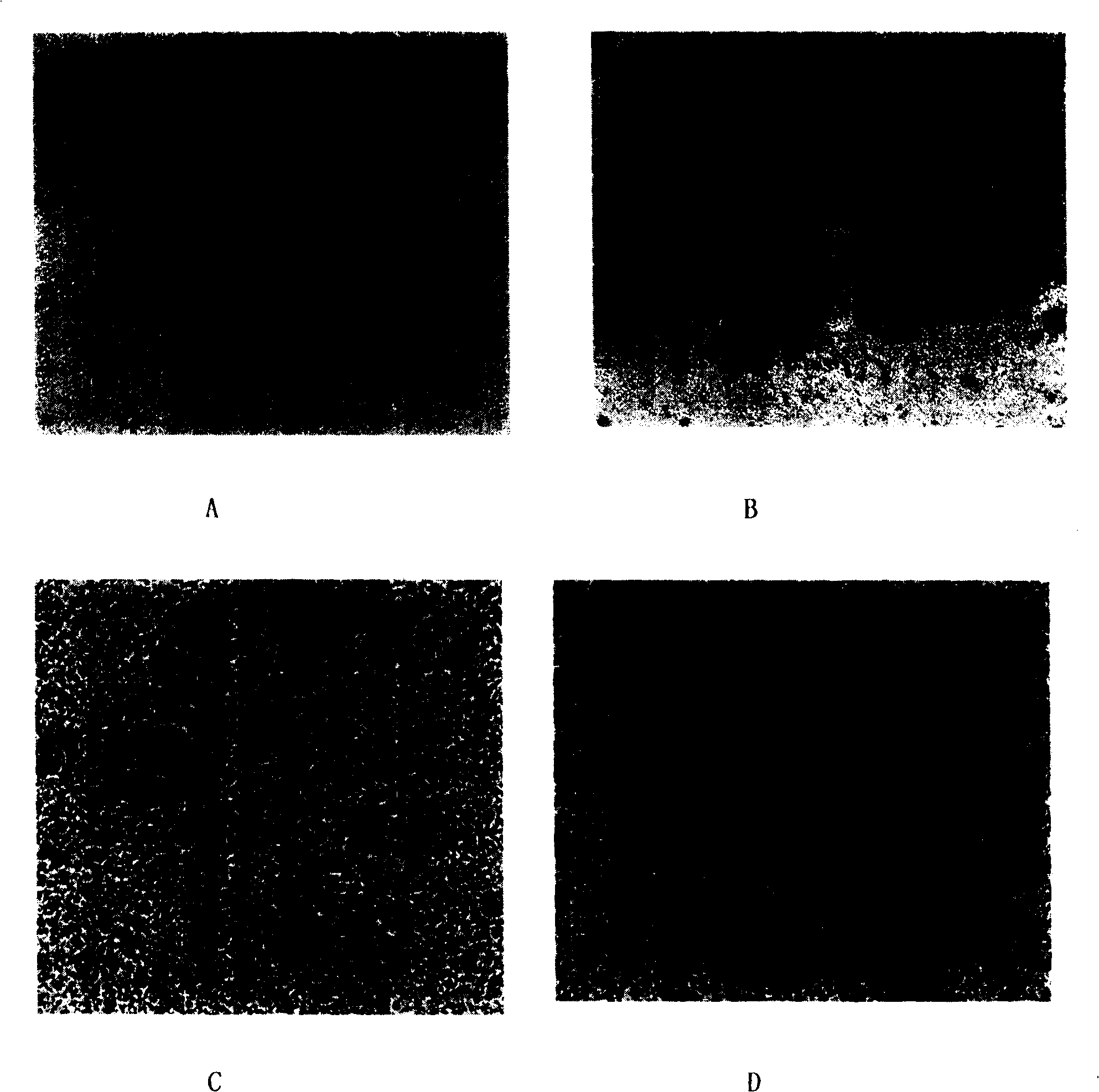Immunization microsphere in use for detecting SARS antibody, preparation method and application
A technology of immune microspheres and antibodies, which is applied in the direction of measuring devices, instruments, scientific instruments, etc., can solve the problems of enzyme-linked immunoassays that are not simple enough, fast, false positive experiment errors, unstable immune microspheres, etc.
- Summary
- Abstract
- Description
- Claims
- Application Information
AI Technical Summary
Problems solved by technology
Method used
Image
Examples
Embodiment 1
[0136] Embodiment 1, the preparation of the immune microsphere coupled with the SARS coronavirus S protein as antigen
[0137] Preparation and identification of SARS coronavirus S protein antigen:
[0138]Preparation—cloning, expressing and purifying SARS coronavirus S protein as an antigen by gene recombination technology: using RT-PCR method to amplify the gene fragment of SARS coronavirus S, and after the gene fragment is sequenced to confirm that the gene sequence is correct, then the It is cloned into an expression vector such as prokaryotic expression vector pQE30, or yeast expression vector pPICZαA, and then expressed and purified.
[0139] Identification—After antigen purification, identification is performed by the following tests:
[0140] 1) Determination of antigenic protein content: Take 1 ml of antigen and measure its protein content with a spectrophotometer. After measuring the OD values at 260nm and 280nm respectively, use the formula 280nm Odx1.45-260nmODx0...
Embodiment 2
[0150] Embodiment 2, the preparation of the immune microsphere coupled with the SARS coronavirus N protein as antigen
[0151] Preparation and identification of SARS coronavirus N protein antigen:
[0152] Preparation—Using genetic recombination technology to clone, express and purify the SARS coronavirus N protein as an antigen: use RT-PCR to amplify the gene fragment of SARS coronavirus N, and after the gene fragment is sequenced to confirm that the gene sequence is correct, the It is cloned into an expression vector such as prokaryotic expression vector pQE30, or yeast expression vector pPICZαA, and then expressed and purified.
[0153] Identification—After antigen purification, identification is performed by the following tests:
[0154] 1) Determination of antigenic protein content: Take 1 ml of antigen and measure its protein content with a spectrophotometer. After measuring the OD values at 260nm and 280nm respectively, use the formula 280nm Odx1.45-260nmODx0.74 to c...
Embodiment 3
[0164] Embodiment 3, the preparation of the immune microsphere coupled with the SARS coronavirus M protein as antigen
[0165] Preparation and identification of SARS coronavirus M protein antigen:
[0166] Preparation—cloning, expressing and purifying SARS coronavirus M protein as an antigen by gene recombination technology: using RT-PCR method to amplify the gene fragment of SARS coronavirus M, and after the gene fragment is sequenced to confirm that the gene sequence is correct, then the It is cloned into an expression vector such as prokaryotic expression vector pQE30, or yeast expression vector pPICZαA, and then expressed and purified.
[0167] Identification—After antigen purification, identification is performed by the following tests:
[0168] 1) Determination of antigenic protein content: Take 1 ml of antigen and measure its protein content with a spectrophotometer. After measuring the OD values at 260nm and 280nm respectively, use the formula 280nm Odx1.45-260nmODx...
PUM
| Property | Measurement | Unit |
|---|---|---|
| diameter | aaaaa | aaaaa |
Abstract
Description
Claims
Application Information
 Login to View More
Login to View More - R&D
- Intellectual Property
- Life Sciences
- Materials
- Tech Scout
- Unparalleled Data Quality
- Higher Quality Content
- 60% Fewer Hallucinations
Browse by: Latest US Patents, China's latest patents, Technical Efficacy Thesaurus, Application Domain, Technology Topic, Popular Technical Reports.
© 2025 PatSnap. All rights reserved.Legal|Privacy policy|Modern Slavery Act Transparency Statement|Sitemap|About US| Contact US: help@patsnap.com



